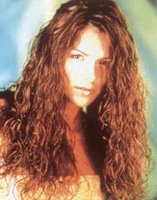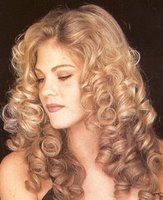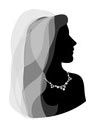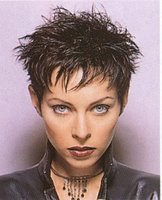 Taking hair care is in fact much the same as taking skin care. An effective hair care discipline involves cleansing, toning and conditioning routines carried out with religious regularity.
Taking hair care is in fact much the same as taking skin care. An effective hair care discipline involves cleansing, toning and conditioning routines carried out with religious regularity.1.Care Of Oily Hair And Scalp Condition:
The principle of care for oily hair and scalp condition is the same as used for oily skin condition. The routine aims at removing the excess oil and to exfoliate skin cells which clogs up and suffocate the hair follicles in our scalp. The emphasis is laid on cleansing and toning routines. Since the hair has to be washed as frequently as it gets dirty and oily, a natural shampoo on a formulation of herbs such as amla, shikakai, trijla is ideal. Massaging hair and scalp is important for the well being as well as good growth of the hair. For dry hair, scalp massaging with oil is recommended. For oily hair massaging with toning lotion is suitable.
Home-made Cosmetics For Oily Hair:
A.Take some dry soap nuts(reetha) and soak them in water overnight. Mash them in the morning and strain the soapy solution. Add a tsp of shikakai powder and wash your hair.If you are unable to make the shampoo cleanser at home, use this infusion recipe.Prepare it and mix in the shampoo you use.
B.To make the infusion, boil two handful of mint leaves in one and a half glass of water for 20 minutes. Strain the solution and mix in a 300ml bottle of shampoo.
Toning Lotion For Oily Hair:
Mix a tbsp of Malt Vinegar in a glass of water.Add a pinch of salt in it.Use 2 tbsps of it on your scalp and massage it with your finger tips twice a week.Leave the lotion on for one hour.Rinse with cool water, brush and set your hair.
2.Care For Dry Hair:
Dry hair tends to be thin and rough.It is susceptible to tangles, damage, breakage and split ends.The primary aim is to replenish the oil and the moisture in the hair.
Home-made Cosmetic Care For Dry Hair:
Below are given few natural recipes that are time-tested.
The Gentle Cleanser:
Beat an egg in a cup of the skimmed milk.When the foam becomes consistent, rub it into the scalp. Leave it on for 5 minutes.Rinse the hair thoroughly with water. Carry out this routine twice a week.
The Protein Conditioner:
Beat one tbsp of castor oil, one tbsp of glycerine, one tbsp of cider vinegar and a tsp of mild herbal shampoo.Apply it on scalp and leave it on for 20 minutes.Rinse with clear water.
A Special Massage Oil Toner
Buy a bottle of castor oil or coconut oil. Add a tsp of lavender essential oil in it.Heat a little and massage it gently on your scalp at night. Rinse or shampoo it out in the morning. Follow this routine at least twice a week.





















